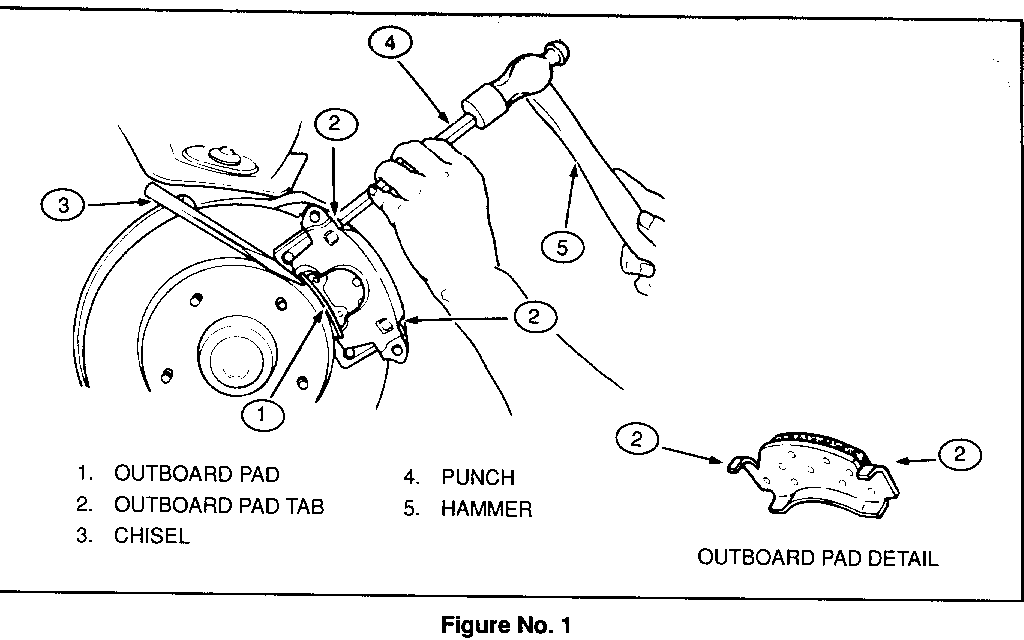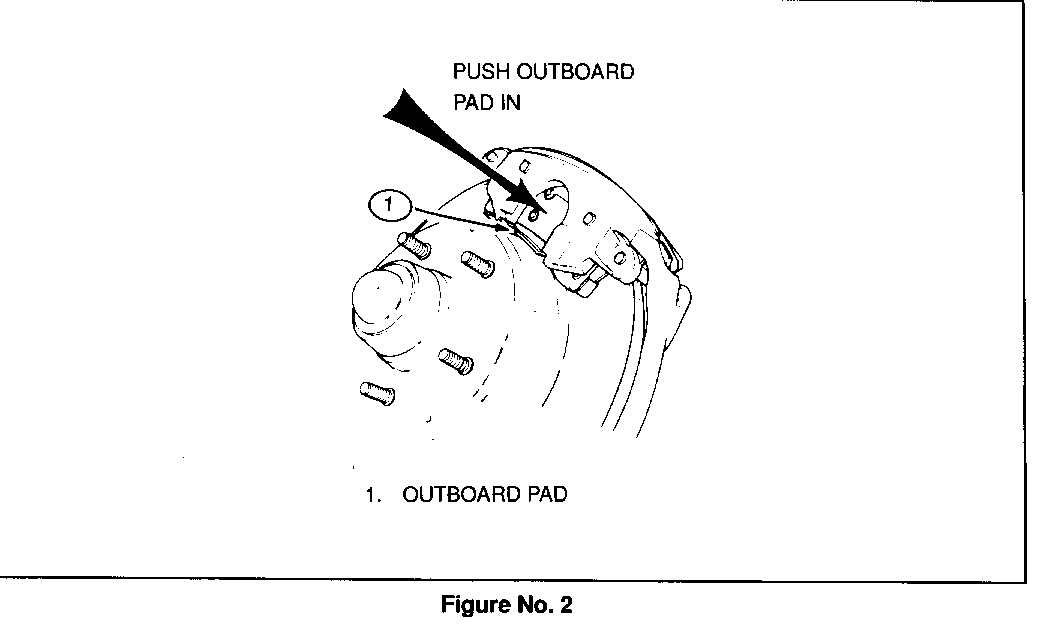FRONT BRAKE NOISE REVISED PROCEDURE

MODELS: 1983-89 M,S/T,R/V,P AND G (EXCEPT G3 VEHICLES EQUIPPED WITH RPO JB8)
Some front brake noise (clicking, popping and squealing) can be caused by insufficiently clinched outboard brake pad tabs. Loose outboard pads can move within the caliper generating noise. The out-board brake pad clinch can be checked by pushing on the back of the pad with your thumb. The pad should not move. If any movement is felt, the pad should be reclinched. Pad tab clinching must be checked whenever pads are removed or replaced.
All future light duty service manuals will be updated with the following revised brake pad clinch procedure, replacing the procedure listed in Service Manual X-8932 (Section 5A2, pages 3 & 4) and in Service Manual X-8930 (Section 5A2, pages 3 & 4).
Revised Service Procedure
1. Wedge a flat chisel between the brake pad and rotor hat so that there is maximum clearance between the shoe tab and caliper casting ear (Figure 1).
2. Using a brass punch and hammer, carefully drive the upper brake pad tab down against the caliper ear. Repeat this step for the lower tab (Figure 1).
3. Push on back of pad with your thumb to insure clinch is tight. Pads should not move (Figure 2).
NOTICE: Do not attempt to clinch inboard pads as they must be allowed to freely move in the brake caliper.


General Motors bulletins are intended for use by professional technicians, not a "do-it-yourselfer". They are written to inform those technicians of conditions that may occur on some vehicles, or to provide information that could assist in the proper service of a vehicle. Properly trained technicians have the equipment, tools, safety instructions and know-how to do a job properly and safely. If a condition is described, do not assume that the bulletin applies to your vehicle, or that your vehicle will have that condition. See a General Motors dealer servicing your brand of General Motors vehicle for information on whether your vehicle may benefit from the information.
